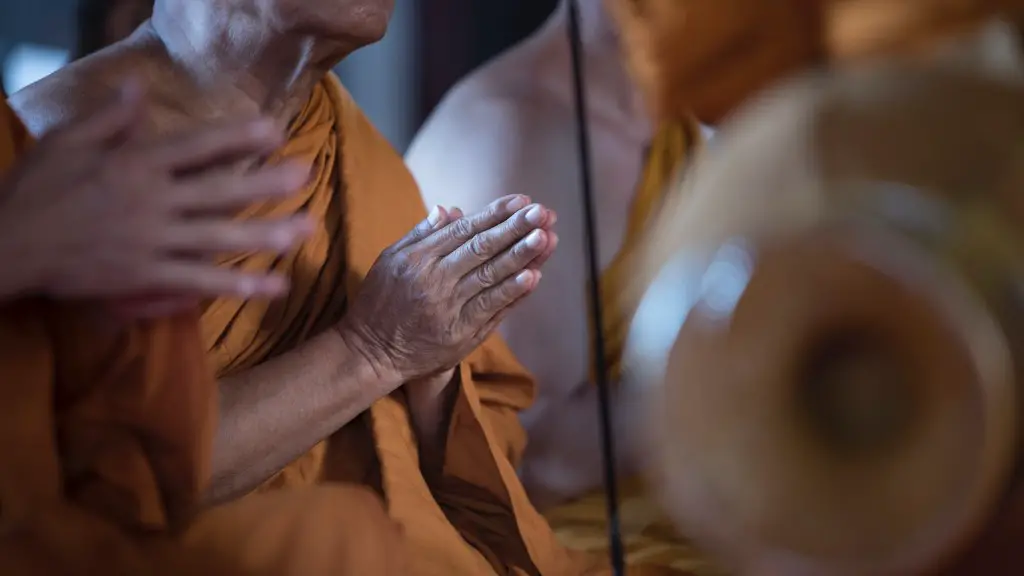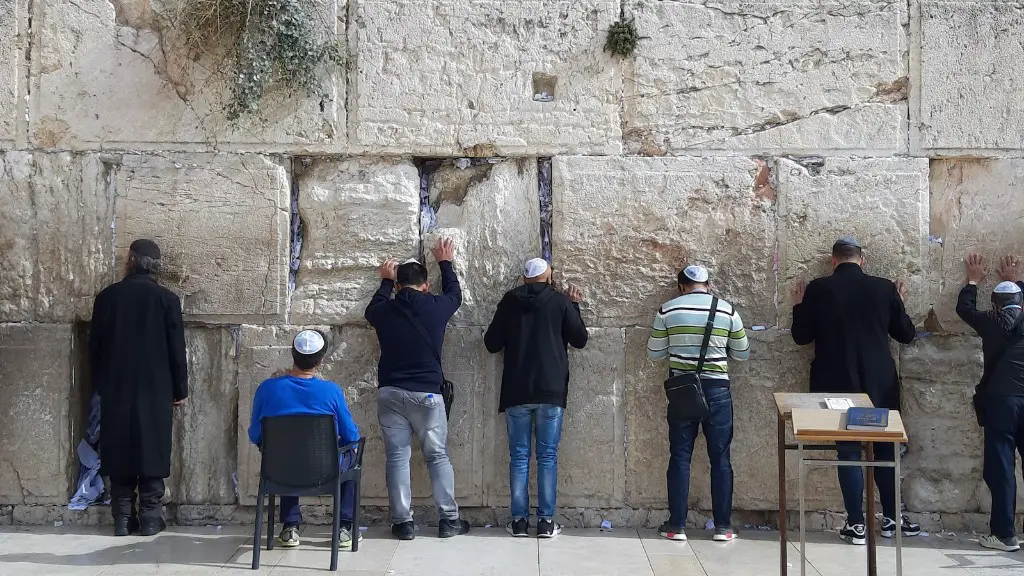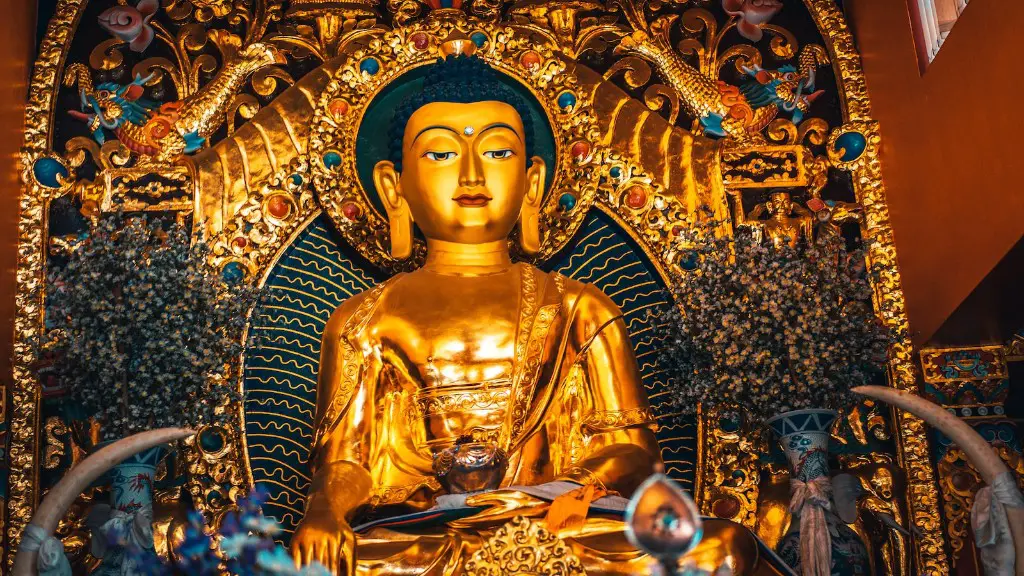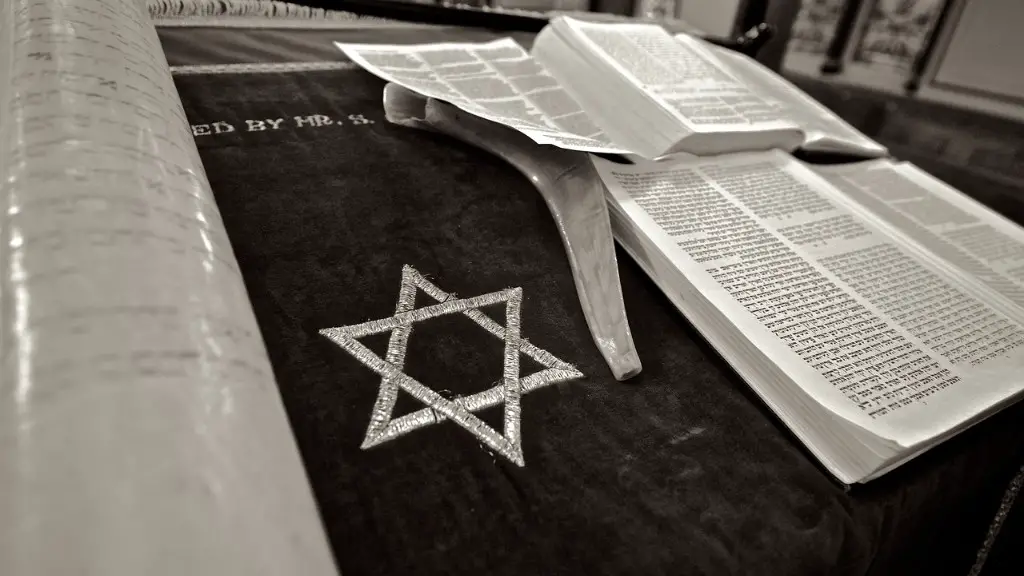What Is The Most Holy Day In Judaism
The most holy day in Judaism is Yom Kippur – the Day of Atonement. Yom Kippur is observed annually on the tenth day of the Hebrew month of Tishrei (October or November). It is marked by special services, a strict fast in which Jews abstain from food and drinks, and a complete cessation of labor. In the Jewish faith it is considered the holiest and most solemn day of the year.
According to Jewish tradition, it is believed that on Yom Kippur, God judges each person individually, granting forgiveness for sins that have been confessed and actively repented. Thus, the day is focused on self-reflection and repentance. It is also a day to remember the dead and to seek forgiveness from those whom one may have wronged. On Yom Kippur, real or perceived spiritual deficiencies are thought to be corrected, and Jews strive to become closer to God.
On Yom Kippur, it is customary to spend the entire day in a synagogue. Prayers for the day include Kol Nidrei, meaning “All Vows,” which seeks to annul all vows and promises made throughout the year. During the Ne’ilah, or closing prayer services, the gates of heaven are believed to be opened and sins can be forgiven.
Observant Jews abstain from food, drink and sexual activities on Yom Kippur. The fast is said to help bring clarity of mind and humility, and to imitate the angels in heaven who are believed to have no physical urges.
In addition to the abstention from food, other activities which are prohibited on Yom Kippur include wearing leather or shoes, touching or carrying money, bathing, makeup, and anointing oneself with scents or oils.
Following Yom Kippur, the book of life is expected to be inscribed, and so many Jewish people celebrate with a festive meal. The juxtaposition of repentance and celebration during the same period is typical in Judaism, and underlines the importance of finding joy in the world.
The Meaning Behind Yom Kippur
The concept of seeking forgiveness from God is deeply embedded in the history of Judaism. Forgiveness is sought for transgressions both between God and the individual, and between individuals and others. Asking for forgiveness is an important part of the development of a strong relationship with God.
The rabbis explain that one of the purposes of Yom Kippur is to make amends for the wrongs committed against others, such as offenses committed against property, family, and the dignity of other people. Though it is not a substitute for the direct, verbal apology for wrongs done, Yom Kippur stands as a reminder to take the initiative to repair the relationships damaged by discord.
Rain or shine, Jews around the world attend synagogue services on Yom Kippur as a way to express solidarity, which is meant to draw people closer to God and to each other. It is a religious practice which emphasizes the tie between the individual and God, and the communal connection which is meant to be shared. A central theme of Yom Kippur is helping people achieve atonement and absolution.
The holy day is intended to provide opportunity for Jews to come together and participate in a common religious experience. It is a period of contemplation and prayer for the forgiveness of sins, for the protection of oneself and one’s family, and for strength of character in the face of temptation.
The Rituals During Yom Kippur
The rituals associated with Yom Kippur include conducting a special Yom Kippur prayer service, abstaining from food and drink, wearing white, and reciting the proper blessings.
The main Yom Kippur prayer service includes two services, one in the morning and one at night. Both services involve a recitation of liturgy, as well as Scripture readings and special poetic prayers. The synagogue is filled with the sounds of chanting and reciting, and there is a feeling of solemnity in the air.
It is also important to abstain from food and drink, a part of the custom known as fasting. Fasting on Yom Kippur is intended to bring the religious closer to God, reminding them of the importance of the day and of their need to repent.
Wearing white is also a part of the ritual of Yom Kippur. The concept is based on the idea that, upon repentance, one’s sins are washed away, leaving one as pure as a white garment. The color white is meant to reflect the idea of purity and spiritual cleansing.
One of the most important rituals on Yom Kippur is the recitation of blessings. Special blessings are recited to God, thanking Him for the laws he has given and seeking forgiveness for the year’s sins. This prayer is meant to bring the worshiper closer to God and demonstrate their repentance in earnest.
Yom Kippur Customs in Different Cultures
The observance of Yom Kippur has evolved over the centuries, with varying customs and traditions among different Jewish cultures. In traditional Jewish communities, Yom Kippur services are often family-oriented, and there is an emphasis on prayer and recitation of Scripture.
within modern Jewish communities, the observance of Yom Kippur is usually more individualized. More lenient forms of observance are often accepted, and the focus has shifted away from formal observance and more toward personal reflection and spiritual contemplation.
In secular Jewish culture, the traditional observance of Yom Kippur has been replaced with remembrance and commemoration of the day’s meaning. This includes museums and cultural exhibitions, group discussions, and panel discussions focusing on topics such as the nature of guilt, atonement, and human relations.
Yom Kippur is also a public holiday in many countries, giving non-Jewish people an opportunity to recognize the religious significance of the day. For instance, in many countries where Israel has diplomatic relations, government institutions recognize and honor Yom Kippur, and some even hold special events and services.
Significance of Yom Kippur In Our Time
The meaning of Yom Kippur has shifted over time, due in part to the changes in the political and cultural climate, but the religious significance remains. For Jewish people, Yom Kippur is still a time for repentance and spiritual purification. It is a time for self-reflection and for seeking forgiveness, and for celebrating life with family.
Additionally, Yom Kippur is a reminder of the responsibility we all have to strive for justice, mercy, and peace. It is an opportunity to express sorrow for wrongs done and hopes that come in the future. Yom Kippur is still a time of deep meaning and spiritual purification, and it is a reminder of the importance of being humble and reflective.
Conclusion and Summary
Yom Kippur is the holiest day of the Jewish year, celebrated each year on the tenth day of Tishrei. It is a day for repentance and for seeking forgiveness for oneself and for others. The day is marked by special religious rituals, the observance of a strict fast, and prayer services conducted in synagogues. The day is also observed differently in different cultures. In contemporary times, the meaning and observance of Yom Kippur still remains an important part of the Jewish faith, and a reminder of our responsibility to be humble, reflective, and seek justice, mercy, and peace.




